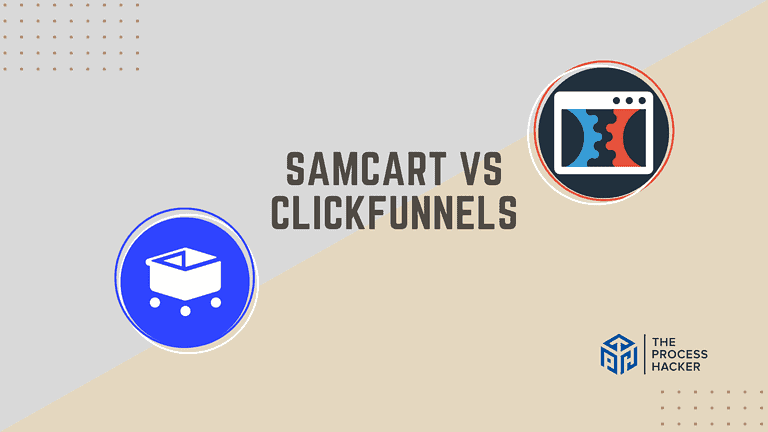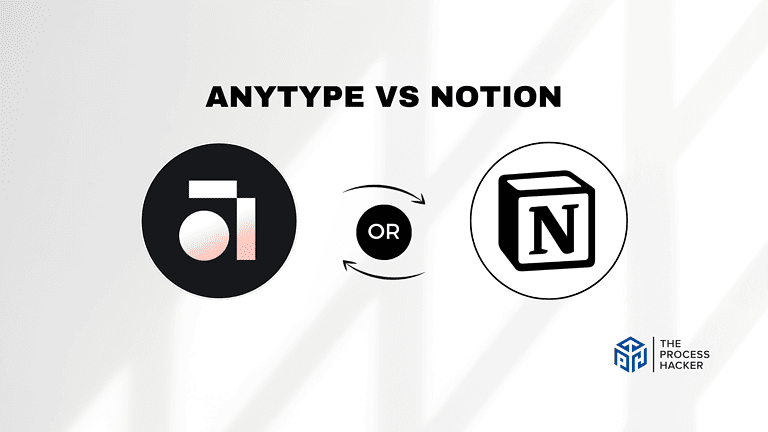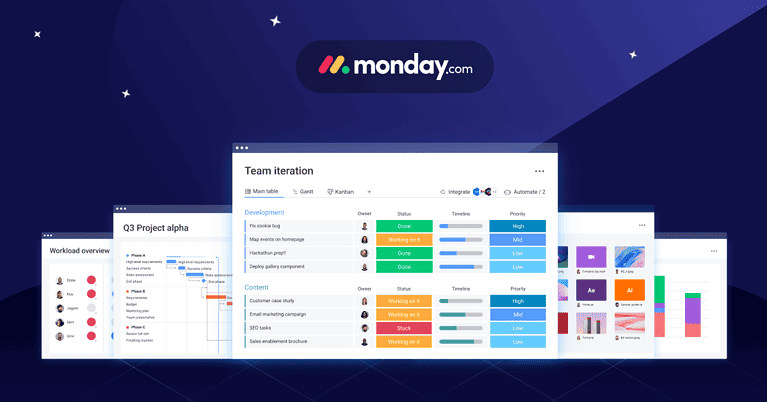How to Launch a New Website: A Step-by-Step Success Guide
Have you ever wondered how those sleek, successful websites got their start? It’s not magic, and it’s definitely not luck.
It’s a carefully orchestrated process, and today, we’re pulling back the curtain to reveal the step-by-step success guide to launching your own website or doing a complete website redesign. Whether you’re an aspiring entrepreneur, a creative artist, or just someone with a message to share, this guide is your roadmap to online success.
Launching a personal or business website can seem daunting, but it doesn’t have to be. With the right strategy and some elbow grease, you can turn your vision into a reality.
Think of this guide as your trusted companion on this journey. We’ll walk you through each step, offering insights, tips, and best practices to ensure your website makes a splash.
So, are you ready to embark on this exciting adventure? Let’s dive in and discover the secrets to launching a new website that looks great and delivers results.
What is a Website Launch?
Consider a website launch, which is the digital equivalent of a grand opening. It marks the moment your website transitions from a behind-the-scenes project to a publicly accessible platform.
However, a successful launch involves more than simply making your website live. It’s about strategically positioning your online presence for maximum impact and future growth.
A well-planned launch strategy is essential for several reasons. It helps you generate initial interest and drive traffic to your site, increasing visibility and potential engagement.
Moreover, a strategic launch can positively impact your search engine rankings, making it easier for your target audience to discover you organically. A seamless launch also creates a positive user experience, encouraging visitors to stay longer, explore your offerings, and potentially convert into customers or subscribers.
Key components of a successful website launch include:
- Clearly Defined Goals and Target Audience: Before going live, determine your website’s purpose and the specific audience you intend to reach.
- User-Centric Design and Functionality: Your website should be visually appealing, intuitive to navigate, and optimized for seamless performance across various devices.
- Compelling and Relevant Content: Ensure your content is informative, engaging, and tailored to resonate with your target audience, providing value and establishing your authority.
- Robust Marketing and Promotion Strategy: Develop a comprehensive plan to create awareness and anticipation for your website launch, utilizing social media channels, email marketing, and other relevant channels.
- Search Engine Optimization (SEO) Focus: Implement SEO best practices to enhance your website’s visibility in search engine results, making it easier for potential visitors to find you.
Why a Strategic Website Launch Matters
Think of your website launch as your first impression in the digital world. It’s your chance to showcase your brand, capture attention, and leave a lasting mark on your visitors.
A well-executed launch creates a positive brand perception, demonstrating professionalism, credibility, and attention to detail. Moreover, it contributes to a seamless user experience, encouraging website visitors to explore further and engage with your content.
But a strategic launch goes beyond first impressions. It significantly influences your search engine rankings and visibility.
Search engines prioritize websites that offer valuable content, user-friendly navigation, and fast loading times – all elements that are at the core of a well-planned launch. By incorporating SEO best practices from the get-go, you can position your website for higher visibility and increased organic traffic, making it easier for potential customers or clients to find you.
Finally, a strategic website launch lays the groundwork for long-term success. It sets the tone for your online presence, establishes a foundation for future growth, and increases your chances of achieving your business objectives.
Remember, a successful launch is not just about the initial fanfare; it’s about building a sustainable online presence that continues to attract and engage your target audience over time.
Pre-Launch Checklist: How to Prepare for Your Website Launch
Imagine your website launch as a rocket launch. You wouldn’t blast off without meticulous checks and preparations, would you? The same principle applies to your website. A successful launch hinges on thorough preparation.
This website launch checklist covers the essential tasks to tackle before unveiling your website to the world. Consider it your mission control center, ensuring everything is in perfect order before the big day.
The importance of meticulous preparation cannot be overstated. It minimizes the risk of technical glitches, ensures a seamless user experience, and maximizes your chances of making a positive first impression. So, let’s roll up our sleeves and get your website launch-ready!
#1) Define Your Website Goals and Target Audience
Every successful journey starts with a clear destination in mind. Before diving into the technicalities of building your website, take a step back and define its purpose.
- What do you want to achieve with your online presence?
- Are you aiming to generate leads, sell products, share information, or build a community?
Clear objectives provide a roadmap for your web development and launch strategy. They help you prioritize features, create relevant content, and tailor your marketing efforts. Without defined goals, it’s easy to lose focus and end up with a website that lacks direction and fails to resonate with your audience.
Equally important is identifying and understanding your target audience. Understanding your audience helps you create content that speaks directly to them, design a user experience that caters to their preferences, and ultimately achieve your website goals.
- Who are the people you want to reach with your website?
- What are their interests, needs, and pain points?
Your website is not just a collection of web pages; it’s a communication tool. By defining your goals and target audience, you ensure your message hits the mark and resonates with the people who matter most.
#2) Plan Your Website Structure and Content
Start by creating a sitemap. This visual representation of your website’s structure helps you organize your content and define the hierarchy of pages. It also plays a crucial role in search engine optimization, allowing search engines to crawl and index your website effectively.
Next, focus on navigation. Design a clear and intuitive menu that allows visitors to effortlessly find what they want. Cluttered or confusing navigation can lead to frustration and prompt visitors to leave your site prematurely.
Content is the heart and soul of your website. It’s what attracts visitors, engages them, and keeps them coming back for more. Therefore, developing a content strategy is crucial. Identify the types of content that will resonate with your audience, whether it’s blog posts, articles, videos, or infographics.
An editorial calendar helps you maintain consistency and ensures you have a steady stream of fresh content. Plan your content in advance, schedule publication dates, and assign responsibilities to team members if applicable.
Remember, your website structure and content should work hand-in-hand to create a cohesive and engaging online experience. A well-organized site with relevant, valuable content is the key to attracting and retaining visitors.
#3) Design for User Experience and Brand Identity
The same saying is still true in today’s competitive business landscape. Indeed, first impressions matter more than ever. A visually appealing and user-friendly website captures attention and keeps visitors engaged. But it’s not just about aesthetics; it’s about creating a seamless experience that caters to diverse devices and showcases your unique brand identity.
Responsive design is non-negotiable. With more people accessing websites on smartphones and tablets, your site launch must adapt flawlessly to different screen sizes. A responsive design ensures optimal viewing and interaction across all devices, providing a consistent experience for everyone.
Remember, your website is an extension of your brand. It’s essential to incorporate your brand elements consistently throughout the design.
From color schemes and fonts to imagery and tone of voice, every element should reflect your brand personality and resonate with your target audience. A cohesive brand experience fosters recognition, builds trust, and leaves a lasting impression.
Invest in professional design if necessary. A well-designed website looks great, enhances usability, boosts credibility, and contributes to overall online success.
How to Launch Your New Website
Now that you’ve laid the groundwork, it’s time to embark on the exciting journey of launching your new website. Think of this step-by-step guide as your trusty map, guiding you through each phase of the launch process. We’ll break down the key stages, ensuring a smooth and successful transition from development to live site.
Launching a website is not a one-time event; it’s an ongoing process. Even after your site goes live, there will be opportunities to refine, optimize, and grow.
But by following this guide and taking a strategic approach, you’ll be well on your way to establishing a solid online presence and achieving your website goals. So, let’s dive in and prepare your website for its grand debut!
#1) Develop and Test Your Website
Think of this step as laying the foundation for your online home. You wouldn’t build a house on shaky ground, would you?
The same goes for your website. Choosing a top choice for business web hosting is crucial for ensuring your performance, site security, and uptime.
Next, it’s time to bring your website to life. Whether you’re using a website builder or working with a developer, focus on creating a design that aligns with your brand identity and provides a seamless experience for visitors. Pay attention to details like page load speed, mobile responsiveness, and intuitive navigation.
Thorough testing is your safety net. Before going live, meticulously test every aspect of your website. Check for compatibility and broken link issues across different browsers and devices to ensure all functionalities work as intended.
Remember, even minor glitches can leave a negative impression and impact your credibility. So, leave no stone unturned in pursuing a flawless website launch.
#2) Optimize for Search Engines
The first step in your SEO strategy is on-page optimization. This involves creating compelling title tags and meta descriptions that accurately represent your page content and attract searchers to click. Additionally, paying attention to header tags, keyword usage, and image optimization can further improve your website’s relevance in search results.
XML sitemaps and robots.txt files act as instruction manuals for search engines. A sitemap lists all your pages, helping search engines efficiently crawl and index your website efficiently. On the other hand, a robots.txt file specifies which parts of your site search engines should or shouldn’t access.
Google Search Console and Analytics serve as your performance dashboards. Search Console provides insights into your website’s visibility in Google search results, while the analytics software tracks your website traffic, enabling you to understand your audience and their behavior. Further, tools like Surfer SEO and Semrush allow you to conduct keyword research and optimize your website’s content for better search engine rankings.
By optimizing your on-page SEO strategy for search engines, you aren’t just making it easier for people to find you; you’re also establishing the foundation for long-term organic growth.
#3) Prepare for the Go-Live Date
The countdown to launch day has begun! But before you hit the big red button, make sure every detail is polished and ready for prime time. This final stage is all about putting those finishing touches on your website and ensuring a smooth transition to the live environment.
First things first, double-check all your content and design elements. Proofread every web page, verify that images are optimized and properly displayed, and confirm that all functionalities work flawlessly.
If you’re migrating from an existing website, pay attention to 301 redirects. These ensure that visitors and search engines are seamlessly redirected from your old URLs to the corresponding pages on your new site, preserving your hard-earned search engine rankings and avoiding broken links.
Last but not least, back up your staging site. Think of this as an insurance policy. Should any unexpected issues arise during or after the launch, you’ll have a safe copy of your website to fall back on.
By taking these final preparatory steps, you’ll minimize the risk of hiccups and ensure a seamless go-live experience for both you and your visitors.
#4) Launch Your Website
The moment you’ve been waiting for has arrived! It’s time to launch your website and share it with the world. Take a deep breath, double-check everything one last time, and then hit that launch button. Congratulations—your website is officially live!
But the work continues beyond there. Once your site is live, it’s crucial to conduct post-launch tests. Thoroughly explore the landing page, product page, and every other page, test all functionalities, and ensure everything works as expected. Pay attention to load times, mobile responsiveness, and overall performance.
Monitor your website closely for any issues or errors. Keep an eye on your analytics and server logs for any unexpected spikes or dips in traffic, and promptly address any technical glitches that may arise.
Launching a website is just the beginning. The real journey lies in continuously refining, optimizing, and growing your online presence. But with a well-executed launch, you’ve laid a solid foundation for success.
Website Post Launch Checklist for Website Success
Congratulations on your successful website launch! But remember, the journey doesn’t end there. Think of your website as a living, breathing entity that requires ongoing care and attention to thrive in the ever-evolving digital landscape.
Regular maintenance and optimization are crucial for several reasons. They ensure your website remains secure, up-to-date, and performs optimally. They also help you adapt to changing technologies, search engine algorithms, and audience preferences, ensuring your site stays relevant and engaging.
So, what key areas should you focus on after launch?
- Content Updates and Expansion: Regularly publish fresh, relevant content to keep visitors returning for more.
- Performance Optimization: Monitor your site’s speed and responsiveness and address any bottlenecks hindering the experience.
- SEO Refinement: Stay abreast of the latest SEO trends and continuously optimize your website for improved search engine visibility.
- User Feedback and Analytics Analysis: Gather insights from visitors and analyze your analytics data to understand how people interact with your site and identify areas for improvement.
- Marketing and Promotion: Continuously promote your website through various channels to attract new visitors and keep your audience engaged.
#1) Monitor Website Performance and User Behavior
Now that your website is live, it’s time to focus on understanding how it’s performing and how visitors are interacting with it. Think of this stage as observing your website in its natural habitat, gathering valuable insights to guide your future optimization efforts.
Regularly analyze your traffic and engagement metrics. Tools like Google Analytics provide a wealth of data about your visitors, including where they’re coming from, how long they stay on your site, and which pages they visit most. This information helps you identify your most popular content, understand your audience demographics, and tailor your strategies accordingly.
Pay close attention to post-launch issues. Even with meticulous preparation, some glitches or errors might slip through the cracks.
Monitor your website for any broken links, slow loading times, or compatibility issues across different browsers and devices. Address any issues promptly to ensure a seamless experience for everyone.
Remember, your website is a dynamic entity. By continuously monitoring its performance and understanding visitor behavior, you can make informed decisions, implement improvements, and ensure your site continues to evolve and meet the needs of your audience.
#2) Implement a Content Marketing Strategy
Your website launch might be over, but the conversation with your audience has just begun. Content marketing is your key to keeping that conversation going, building relationships, and establishing yourself as a go-to resource in your field.
Think of your website as a magnet. Fresh, relevant content is the irresistible force that keeps attracting visitors and encouraging them to return for more.
Regularly do keyword research and update your site with blog posts, articles, videos, or other formats that resonate with your target audience. Offer valuable insights, address their pain points, and showcase your expertise.
But creating great content is just one part of the equation. You also need to get it in front of the right eye.
Leverage social media and email marketing to promote your content and drive traffic to your website. Share snippets, teasers, and links on your social platforms, and nurture your email subscribers with newsletters featuring your latest content.
Content marketing is not a sprint; it’s a marathon. Consistent effort and a focus on providing value will build trust, establish your authority, and keep your audience engaged for the long haul.
Common Pitfalls to Avoid When Launching a New Website
Launching a new website is exciting, but it’s also easy to fall into some common traps that can hinder your success. Let’s explore a few of these pitfalls and how to avoid them, ensuring a smooth and impactful launch.
One frequent mistake is neglecting thorough testing. It’s tempting to rush to the finish line, but overlooking testing can lead to technical glitches, broken links, and a frustrating experience for visitors. Always dedicate ample time to testing your website across different devices and browsers before going live.
Another common pitfall is underestimating the importance of SEO. Optimizing your website for search engines is not an afterthought. It should be integrated into your strategy from the beginning. Neglecting SEO can significantly impact your visibility and organic traffic, making it harder for people to discover your site.
Finally, some website owners fail to set realistic expectations for their launch. Overnight success is rare. It takes time to build an audience, establish authority, and see tangible results. Focus on creating a solid foundation and consistently delivering value; the results will follow.
Here are some tips for avoiding these common launch pitfalls:
- Thorough Planning: Take the time to map out your launch strategy, define your goals, and identify your target audience.
- Meticulous Testing: Test every aspect of your website before going live, leaving no room for errors or glitches.
- SEO Integration: Incorporate SEO best practices like putting internal links into your website development and content creation process from the get-go.
- Realistic Expectations: Understand that building a successful website takes time and effort. Focus on continuous improvement and providing value to your audience.
Ensure a Smooth Transition from Old to New
The transition period requires special attention if you’re launching a new website to replace an existing site or content management system. A seamless shift ensures you retain your hard-earned search rankings, keep your audience engaged, and avoid any disruptions to your online presence.
Content migration is a critical aspect of this process. Take the time to carefully map out your content, ensuring all valuable pages and resources are transferred to the new site. Avoid simply copying and pasting; review and optimize your content for the new platform, making sure it’s fresh, relevant, and aligned with your current brand identity.
Preserving your SEO value is paramount. Implement 301 redirects to seamlessly guide visitors and search engines from your old URLs to their corresponding new locations. This helps maintain your existing search rankings and prevents traffic loss during the transition.
Remember, a smooth transition is all about minimizing disruptions and providing a consistent experience for your audience. By taking the time to plan and execute this process carefully, you’ll ensure a successful migration and set your new website up for continued success.
Final Thoughts on New Website Launch
Well, we’ve reached the end of this journey together. We’ve discussed the importance of proper planning and execution when it comes to launching a new website.
Remember, it’s not just about getting that site up and running; it’s about setting yourself up for long-term success. Just like a well-crafted press release, your website should leave a lasting impression on your audience and create buzz around your brand.
But let’s not pat ourselves on the back just yet – the launch is only the beginning of your digital adventure. Keep a close eye on your site’s performance and continue to optimize based on your audience’s needs and the ever-changing landscape of technology.
And don’t be afraid to take risks and try new things—after all, that’s what led you to this exciting new website in the first place! So go forth and make your mark online—we can’t wait to see what you accomplish with this fresh platform.
Cheers to a successful launch and even greater things ahead!







